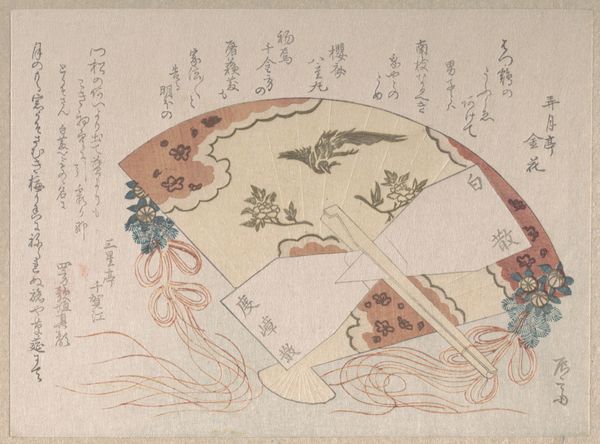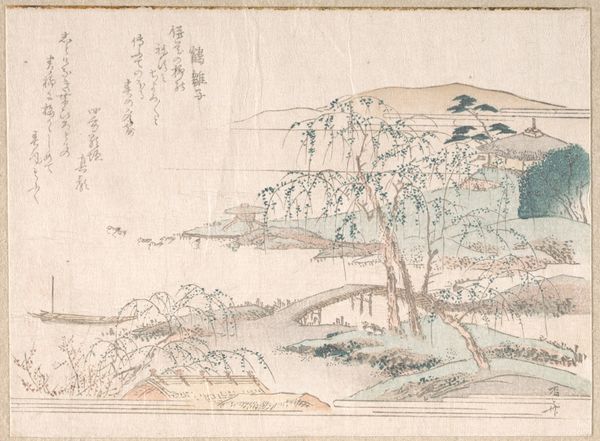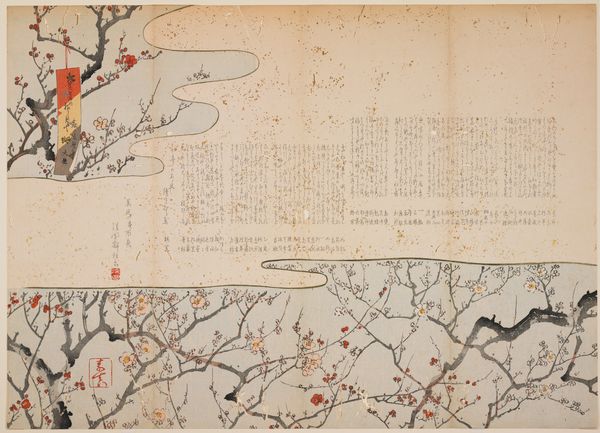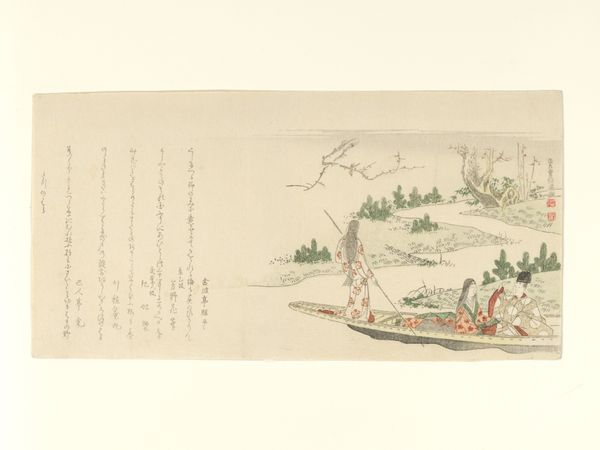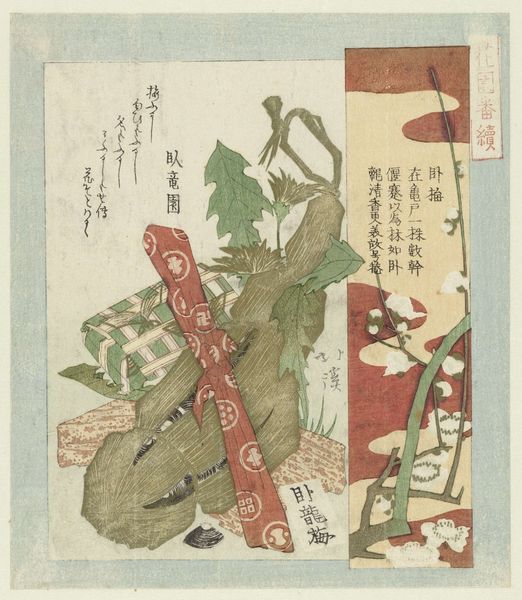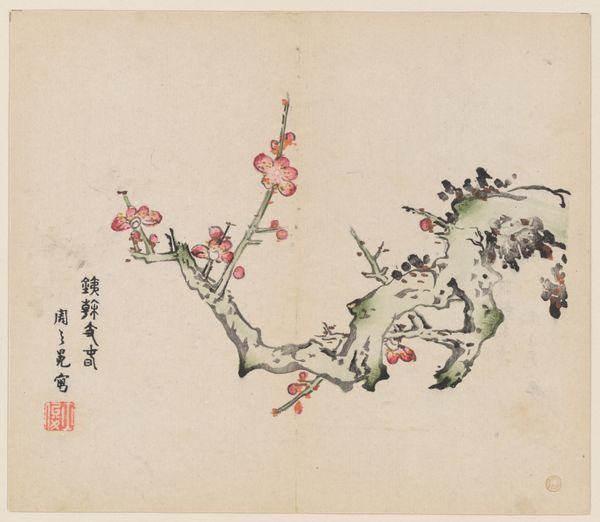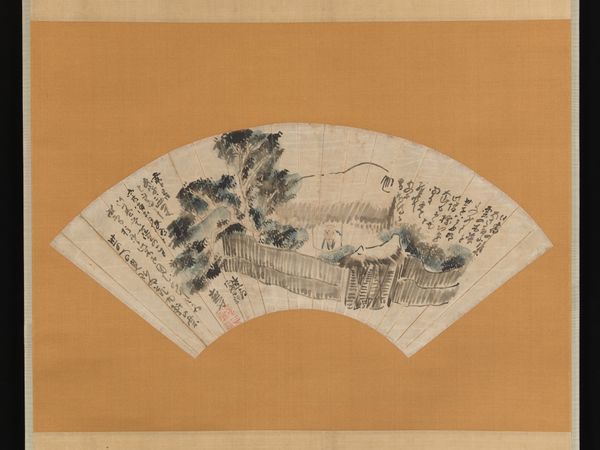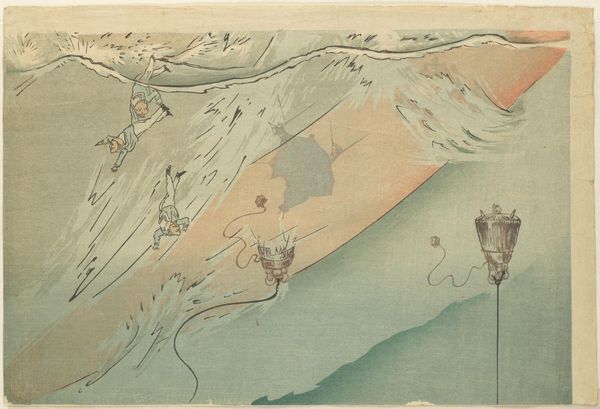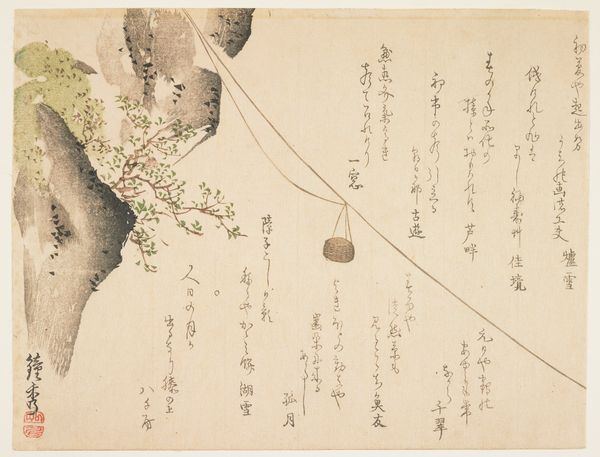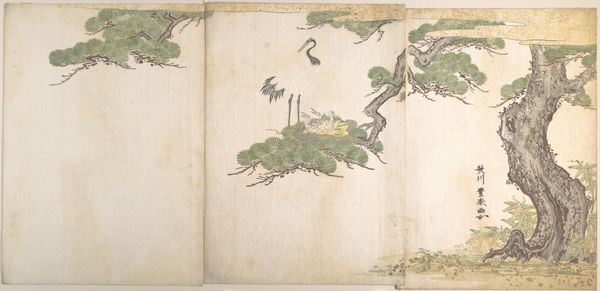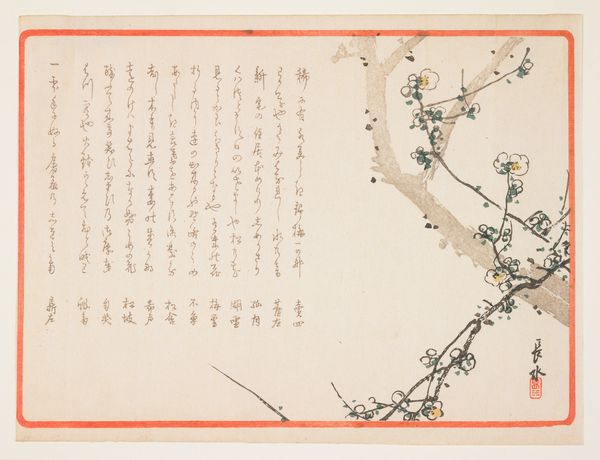
Designs of Writing-Paper with Flowers 19th century
0:00
0:00
drawing, print, textile, paper, watercolor, woodblock-print
#
drawing
# print
#
asian-art
#
textile
#
ukiyo-e
#
paper
#
personal sketchbook
#
watercolor
#
woodblock-print
#
orientalism
#
sketchbook art
#
watercolor
#
calligraphy
Dimensions: 5 5/8 x 7 7/16 in. (14.3 x 18.9 cm)
Copyright: Public Domain
Curator: This print, attributed to Ryūryūkyo Shinsai and titled "Designs of Writing-Paper with Flowers," dates to the 19th century and belongs to the Metropolitan Museum of Art. My first impression is tranquility—the colors are subdued, the lines are delicate. There’s a feeling of ephemeral beauty, like cherry blossoms floating on the wind. Editor: Ah, tranquility isn't the word I'd reach for! It seems far more contrived, almost oppressively self-aware, doesn't it? Look at how the floral arrangement dominates the composition and hems in the textual insert that should, ostensibly, take precedence. It's unsettling, visually speaking. Curator: But isn't that precisely the appeal? It challenges our perception of balance and hierarchy, mirroring the way nature often defies our attempts to organize and understand it. The script offers another, complimentary layer, evoking a fleeting narrative that blends perfectly into nature’s rhythm and quietude. Editor: Perhaps. Although the script itself appears awkwardly positioned and lacks true integration. Consider, however, the deployment of distinct visual fields, each meticulously rendered. The floral pattern boasts vivid color contrasts and detailed leaf venation, while the rectangular backdrop evokes misty mountain scenery using faded outlines and gentle gradations. Do these structural components imply an overt artistic strategy or resonate with spontaneous emotional outpouring? Curator: For me, that distinction becomes wonderfully blurred here! Think about it—art IS always mediated; always 'contrived,' if you prefer. Yet within that conscious artifice, the piece vibrates with sincerity, capturing the essence of transience so present in Ukiyo-e art. Editor: Yes, but if we consider "Designs of Writing-Paper with Flowers" alongside existing artworks and printed materials by this designer, one would quickly grasp this particular designer’s keen understanding of line, tone, shape, scale, and patterns that, considered alongside one another, may offer up a sophisticated insight regarding what its original viewers may have gleaned during the Edo era, not only about personal communications but in design aesthetics. Curator: Exactly. We discover both the design's intentional construction AND its resonance with tradition—allowing us, as viewers, entry into the designer's mindset in the way that only artworks can manage. Editor: An eloquent defense. Let us conclude, then, that both the calculated arrangement and nuanced expressiveness jointly underscore why “Designs of Writing-Paper with Flowers" keeps holding us in silent aesthetic suspense today. Curator: Beautifully said. It really captures art's capacity for self-expression to be not necessarily intuitive but also mediated and thoughtfully planned.
Comments
No comments
Be the first to comment and join the conversation on the ultimate creative platform.
